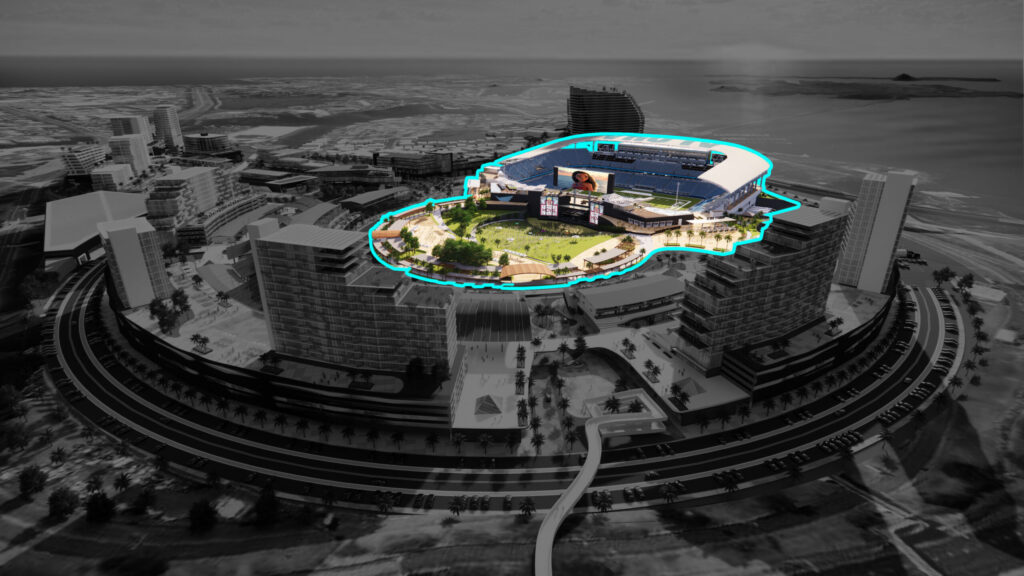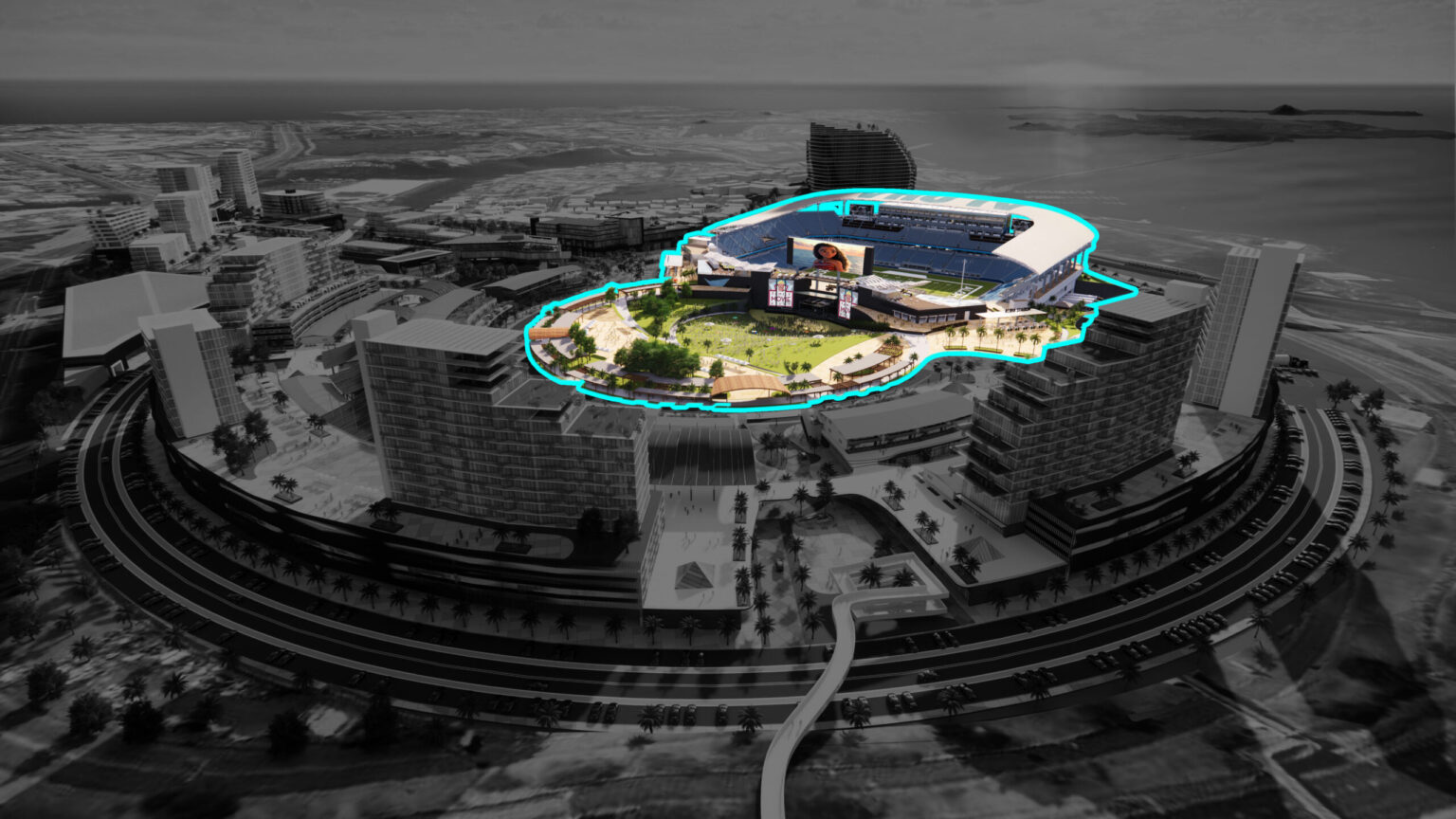The New Aloha Stadium Entertainment Project (NASED) today published a Request for Proposals, formally launching the procurement process for the new Aloha Stadium and the surrounding district. This is the first in a three-stage process resulting in a single Master Developer for the public-private-partnership (P3) project.
“Today’s release of the New Aloha Stadium Entertainment District RFP signals that the project is moving forward as a public-private-partnership agreement and is going to benefit our community into the future,” said Hawai‘i Governor Josh Green, M.D..
The RFP includes 4,500 new housing units, with 70 percent dedicated to workforce housing and 20 percent for affordable housing. The stadium portion of the project is scheduled to open in time for the 2028 UH football season.
“This RFP is an important milestone for the NASED project, and the University of Hawai‘i is looking forward to the future Aloha Stadium and what it will do for UH football and athletics,” said David Lassner, president of the University of Hawai‘i. “The new stadium will be the kind of modern venue that will allow us to remain competitive at the highest levels and help attract talent to Hawai‘i.
According to the Dec. 14 press release, the NASED team remains confident that the procurement is well-structured to face any potential challenges from offerors.

Caption: An artist’s rendering of the new Aloha Stadium Entertainment District shows how the project will include a mix of commercial and residential development. PHOTO COURTESY STATE OF HAWAII
The announcement listed the key features of the RFP, which include:
• The Master Developer will be responsible for designing, building, operating, and maintaining the new Aloha Stadium with a minimum of 25,000 seats, premium suites, a club lounge and loge boxes. The Master Developer will be entitled to generate revenue to support stadium operations and maintenance by marketing the stadium during the limited number of dates not reserved by the State for UH and High School football and related events.
• The expectation is that the Master Developer will design and build the new stadium using allocated state funds and, potentially, Master Developer funds for any additional stadium enhancements.
• The Master Developer will also have the right and obligation to develop a portion of the surrounding district into a mixed-use development in line with the state’s vision of a live, work, play, and thrive community replete with residential units, commercial and retail spaces, hotels, gathering spaces, and other enhancements. Revenue from such development may supplement allocated funds for the stadium construction and to fund ongoing operating and maintenance costs.
• This approach utilizes the current appropriation of $400 million and has the objective of transferring responsibility for containing construction and maintenance costs to the private sector, thereby reducing the risk and financial burden on local taxpayers. The private sector also benefits from the revenue upside of its own effective and compelling utilization of the new Aloha Stadium.
• The state will retain fee ownership of all the land comprising the NASED site. The state will also own the new Aloha Stadium and all of the district infrastructure improvements.
The deadline for proposals is summer 2024, and selection in fall 2024, and a signed agreement to be executed in summer 2025. Construction is expected to begin in late 2025. While the stadium has a targeted completion date of 2028, no date for the housing and surrounding district was given.
According to an FAQ issued with the announcement, the project is expected to generate more than $2 billion in economic output from construction spending, which translates into approximately 12,000 construction jobs.
Additionally, the FAQ goes on to state that the project is forecast to create 700 net annual jobs, $30 million in net annual wages on O‘ahu and more than $23 million in additional net tax revenue upon completion of full build-out.




